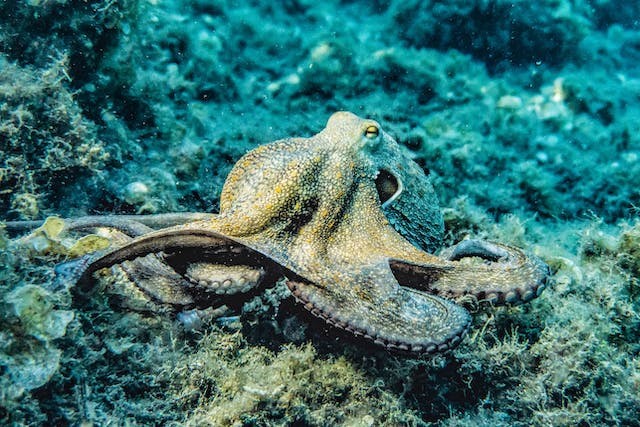
Octopuses have six arms and two legs covered with sucker-covered tentacles. They are the world's most intelligent invertebrates and have a distinct way to mate and procreate.
How Do Octopus Mate?
Octopuses are solitary and are not picky when it comes to mating. According to Jennifer Mather, a cephalopod expert at the University of Lethbridge in Canada, females don't usually reject males who approach them.
However, mating is a dangerous game for males due to the females' penchant for cannibalism. However, males know how to handle them by giving themselves enough space.
They often mate at a distance or after climbing up the back of a female's mantle to avoid being eaten. This allows them more time to flee if their (usually larger) mate becomes aggressive.
The hectocotylus, a modified third right arm found in males but absent in females, has a sperm groove running down it and a unique tip. A male inserts his hectocotylus and spermatophores (sperm packets) into the female's mantle cavity to mate. The copulation could take hours, depending on the species.
In some genera where males are of inferior size than females, such as Argonauta (argonauts, or paper nautiluses) and Tremoctopus (blanket octopuses), they have a detachable hectocotylus that they break off after inserting it into the female's mantle.
Females keep the spermatophores until they are ready to lay eggs. They tend to be restless until they find a protected spot to lay and raise their eggs without being bothered. The empty cases are disposed of, and the spermatophores are inserted into the oviducts. As the developed eggs exit the oviducts, they pass through the oviductal glands, where fertilization occurs. The egg stalks are attached to a substrate by stringing them together using two secretions and mucus from the oviductal glands.
Female octopuses lay their eggs in shallow water. They are consistently affixed to a surface. Females search for a hole, a crack, or a protected spot on rocky coasts, and they frequently use shells, stones, and other solid things they gather to defend their homes.
Males typically pass away months after mating, whereas females tend to their eggs until hatching and then pass away soon after.
Octopus Courtship
Although octopuses are solitary, they still have courtship. During the process, male common octopuses (Octopus vulgaris) will identify themselves as male by rearing up and displaying numerous huge suckers on the underside of their tentacles. However, they only do this when they approach a larger female, who may choose to attack and eat them.
They will also change their color to a light or dark tint and spread out to appear huge.
On the other hand, a male day octopus (O. Cyanea) would tower over his prospective partner and turn pale as he gets closer, flashing a characteristic pattern of black stripes over his body.
Among octopuses, Abdopus aculeatushas is one with the most intricate sexual activities. In this species, a male would usually stay in a den within tentacle reach of the female's den to protect her from rival males. He pushes and wrestles with his rival if a male approaches, leading to a deadly altercation.
To determine their sex, male A. aculeatus maintain their black-and-white stripe pattern on their bodies when a female is around or during an aggressive confrontation. On the other hand, females blend into their environment. Certain "sneaker" males take advantage of these telltale signals by matching the female's body color. This enables them to sneak past a defending male and discreetly mate with the female.
RELATED ARTICLE : Monogamous Albatross Forced To Divorce Due To Climate Change and Warming Water Instead of Breeding Failure
Check out more news and information on Octopus in Science Times.
© 2025 ScienceTimes.com All rights reserved. Do not reproduce without permission. The window to the world of Science Times.











